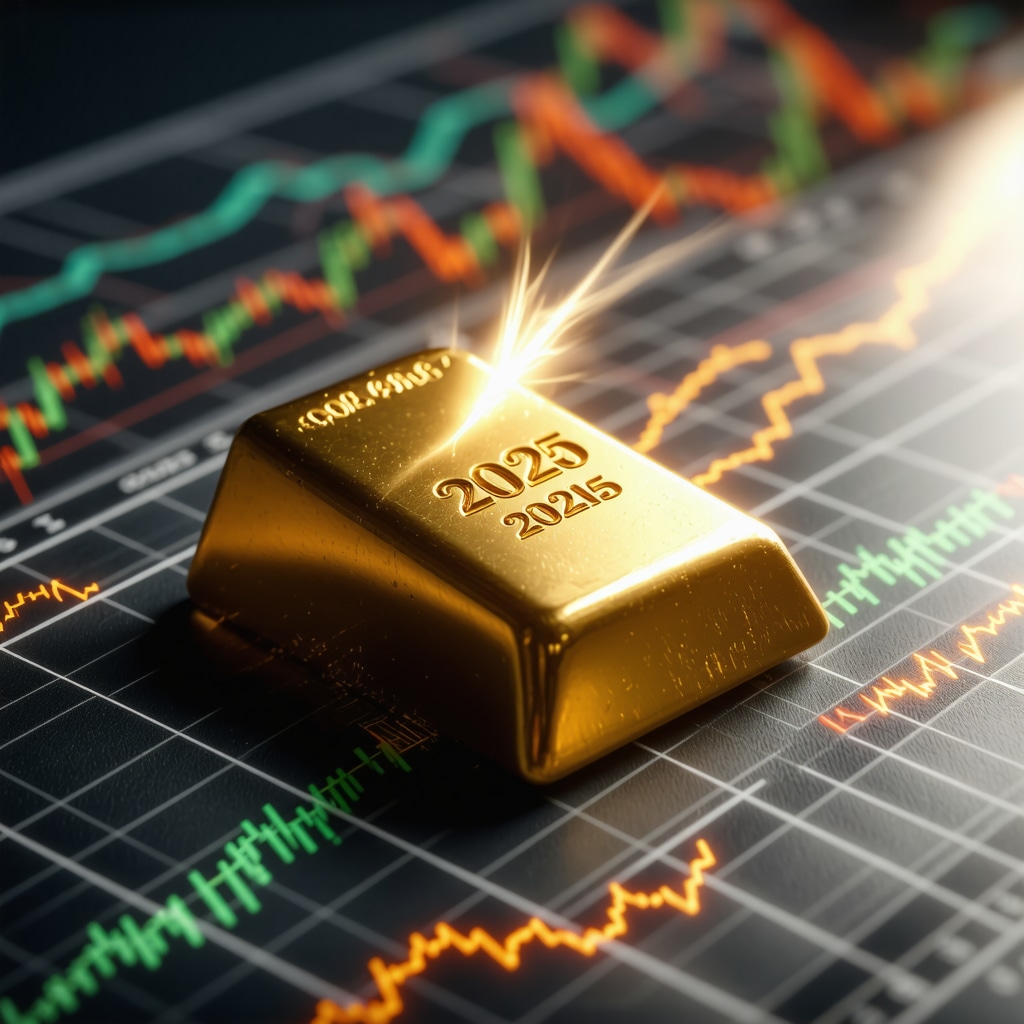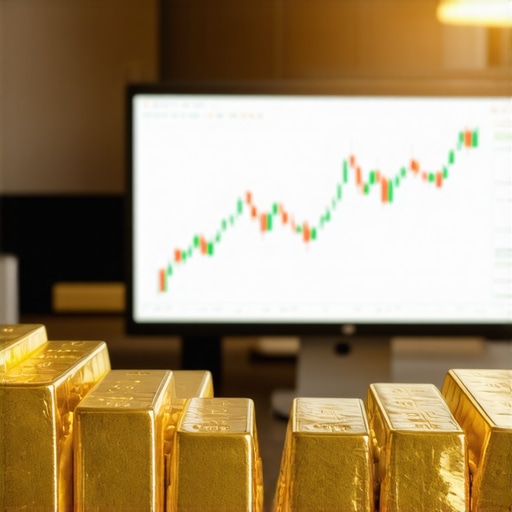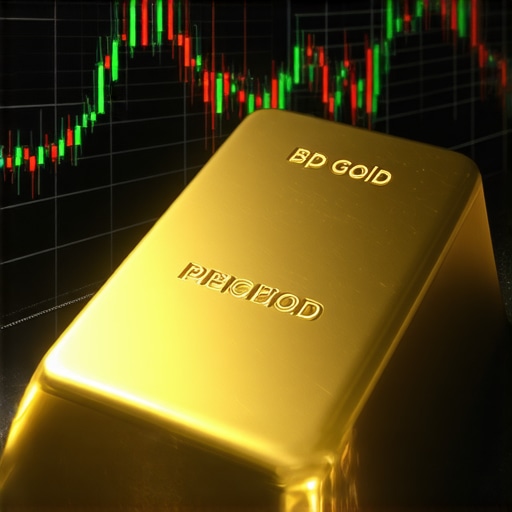Unlocking the Future: Why Gold Remains a Timeless Asset in 2025
As we approach 2025, the global economic landscape continues to evolve with unprecedented volatility, making the gold price forecast more critical than ever for savvy investors. Gold’s intrinsic value as a hedge against inflation and market uncertainty has cemented its role in diversified portfolios. However, understanding the nuanced drivers behind gold’s price movements requires delving deeper than surface trends. Experts anticipate that geopolitical tensions, central bank policies, and shifting demand-supply dynamics will shape the gold market trajectory in the coming years. For instance, recent central bank gold purchases have bolstered demand, signaling confidence amidst currency fluctuations. Investors who grasp these subtleties can strategically position themselves to harness gold’s protective qualities and potential growth.
Decoding Complex Drivers: The Interplay of Global Demand and Supply
The gold market in 2025 will be influenced substantially by global demand trends, including jewelry consumption, technological applications, and investment demand. Emerging markets, particularly in Asia, continue to drive jewelry demand, while technological advances fuel industrial uses. On the supply side, mining output constraints and geopolitical factors may tighten availability, creating upward pressure on prices.
Understanding these forces is crucial; for example, disruptions in major mining regions can trigger supply shocks, while policy shifts in central banks—like increased gold reserves—can amplify demand unexpectedly. This complex interplay underscores why simple price predictions fall short without considering broader economic contexts.
How Can Investors Navigate the Gold Market’s Intricacies in 2025?
One of the most pressing questions investors face is how to effectively incorporate gold into their portfolios amid these uncertainties. Should you prioritize physical gold, gold ETFs, or mining stocks? What strategies maximize protection and growth? The answer lies in a diversified approach tailored to individual risk tolerance and investment horizon.
Physical gold offers tangible security, especially in turbulent times, but requires careful buying practices to avoid counterfeits and ensure liquidity—learn more about secure physical gold purchases in 2025. Gold ETFs and mutual funds provide easier liquidity and exposure but may carry management fees and market risks. Meanwhile, gold mining stocks can offer leveraged upside but involve operational risks tied to mining companies’ performance.
Expert Wisdom: Leveraging Gold as a Strategic Hedge Against Inflation and Volatility
Historically, gold has outperformed during periods of inflation and currency devaluation, serving as a reliable store of value. In an environment where inflationary pressures persist globally, gold’s role as a financial stabilizer becomes pivotal. Investors who understand how to use gold as an effective hedge can protect purchasing power and portfolio stability.
For a comprehensive guide on employing gold in your investment strategy, explore strategies for financial stability with gold, which offers expert insights into maximizing gold’s protective benefits.
What Are the Key Risks That Could Impact Gold Prices in 2025?
While gold offers a safe haven, it is not immune to risks. Fluctuations in the US dollar, interest rate changes by central banks, and evolving investor sentiment can all impact prices. Moreover, advancements in alternative assets or shifts in global economic recovery trajectories might affect gold’s appeal.
Investors must stay vigilant and flexible, continuously monitoring macroeconomic indicators and adjusting their gold exposure accordingly to navigate these uncertainties effectively.
Engage and Share Your Perspective on Gold Investing in 2025
How do you plan to incorporate gold into your investment portfolio this year? Share your strategies or questions in the comments below to join a community of informed investors navigating the complexities of gold markets together.
Authoritative source reference: For in-depth market analysis, the World Gold Council’s reports remain an indispensable resource, providing comprehensive data on global gold demand and supply trends (World Gold Council: Gold Demand Trends).
Integrating Gold With Other Asset Classes for Enhanced Portfolio Resilience
In 2025, a nuanced approach to gold investing goes beyond mere allocation; it involves strategic integration with other asset classes to optimize portfolio resilience. Combining gold with equities, bonds, and alternative investments can smooth volatility and enhance returns, especially during economic downturns.
For example, gold’s low correlation with stock markets means it often gains value when equities decline, making it a valuable diversification tool. However, investors should also consider the role of fixed income and cryptocurrencies in their portfolios alongside gold to balance risk and opportunity effectively.
Exploring resources like why gold outperforms stocks during market downturns can provide deeper insights into this dynamic and help investors design robust mixed-asset strategies.
Gold Mining Stocks: Balancing Growth Potential With Industry-Specific Risks
Investing in gold mining stocks offers unique exposure to gold’s price movements with potential for leveraged gains. Yet, these stocks are influenced by operational factors such as mining costs, geopolitical risks, and company management efficiency.
Evaluating mining stocks involves analyzing financial health, production forecasts, and geopolitical stability in mining regions. For investors seeking growth, understanding these nuances is essential to avoid pitfalls such as mine closures or regulatory challenges.
To build expertise in this area, reviewing comprehensive guides on gold stock analysis is highly recommended.
How Can Emerging Technologies Influence Gold Investment Strategies?
Emerging technologies such as blockchain and artificial intelligence are reshaping gold trading and investment verification processes. Blockchain-based platforms enable greater transparency and security in gold transactions, reducing fraud and improving liquidity.
Additionally, AI-driven market analytics offer sophisticated predictive insights into gold price trends and demand cycles, empowering investors to make more informed decisions.
Adapting to these technological advancements could become a significant competitive advantage in 2025, enhancing both portfolio security and profit potential.
Monitoring Macroeconomic Indicators: Essential Tools for Gold Investors
Staying attuned to macroeconomic indicators is critical for anticipating gold price movements. Key metrics include inflation rates, interest rate policies, currency strength, and geopolitical developments.
For instance, an unexpected rise in inflation often triggers a spike in gold prices as investors seek inflation hedges. Conversely, rising interest rates might dampen gold demand by increasing opportunity costs.
Reliable data sources such as the World Gold Council provide up-to-date statistics crucial for timely investment actions and risk mitigation.
Investors who actively integrate macroeconomic analysis with their gold investment strategies are better positioned to capitalize on market cycles and avoid adverse impacts.
Leveraging Gold ETFs and Mutual Funds: Pros, Cons, and Strategic Fit
Gold ETFs and mutual funds present accessible avenues for gaining exposure to gold without the logistical challenges of physical ownership. These instruments offer liquidity, diversification, and ease of trading on public exchanges.
However, investors must weigh the management fees, tracking errors, and potential counterparty risks embedded in these products. Selecting funds with transparent holdings and strong management is essential for achieving desired outcomes.
For those interested in mutual funds specifically, the beginners’ guide to gold mutual funds offers practical advice on evaluating fund performance and suitability.
Engage With Our Community: Share Your Gold Investment Insights and Questions
We invite you to contribute your experiences and strategies regarding gold investments in 2025. Whether you favor physical gold, ETFs, or mining stocks, your perspective enriches our collective understanding.
Comment below or share this article with your network to foster informed discussions and keep abreast of evolving market trends together.
Harnessing Cutting-Edge Analytics: AI and Big Data Transforming Gold Market Predictions
In 2025, gold investors are increasingly leveraging artificial intelligence (AI) and big data analytics to dissect market signals and forecast price movements with unprecedented precision. These technologies analyze vast arrays of data—from geopolitical events, market sentiment, to macroeconomic indicators—enabling sophisticated pattern recognition beyond traditional methods.
For instance, machine learning models can identify correlations between central bank gold purchases and price spikes or detect early warning signs of supply disruptions caused by geopolitical tensions. This analytical depth empowers investors to anticipate volatility and adjust positions proactively, rather than reactively.
Adopting such AI-driven tools requires understanding their limitations, including data quality issues and model biases, but when integrated thoughtfully, they provide a competitive edge in navigating gold’s complex dynamics.
Strategic Risk Mitigation: Navigating Gold Price Volatility Through Portfolio Engineering
While gold is often viewed as a safe haven, it is not immune to sharp price swings driven by factors such as interest rate hikes, currency fluctuations, or shifts in investor behavior. Advanced investors employ portfolio engineering techniques—like dynamic asset rebalancing and options strategies—to manage exposure and optimize returns.
For example, using gold options can hedge against downside risk or capitalize on anticipated price rallies without full capital commitment. Similarly, incorporating volatility indices alongside gold holdings can provide nuanced risk assessments and timely adjustment triggers.
Such strategies require a deep understanding of derivatives and market mechanics but can significantly enhance resilience in volatile environments.
What Are the Best Practices for Evaluating Geopolitical Risk Impacting Gold Prices?
Geopolitical risk remains one of the most unpredictable yet impactful drivers of gold prices. Effective evaluation involves a multidisciplinary approach combining geopolitical intelligence, economic indicators, and historical precedents.
Investors should monitor emerging conflicts, trade policy changes, and sanctions that could disrupt gold supply chains or alter currency valuations. Consulting expert geopolitical risk assessments and integrating real-time news analytics platforms can provide timely insights.
Moreover, scenario analysis—modeling potential geopolitical developments and their market outcomes—helps in stress-testing portfolios against adverse events, enhancing preparedness.
Refer to authoritative geopolitical risk resources such as the Risk.net Geopolitical Risk Analysis for advanced methodologies and case studies.
Exploring Sustainable and Ethical Gold Investments: Aligning Profit With Responsibility
As investor awareness grows around environmental, social, and governance (ESG) factors, sustainable gold investing emerges as a critical theme. Ethical sourcing, environmental impact minimization, and community engagement now influence not only reputational but also financial outcomes.
Investors can differentiate by prioritizing stocks and funds with certified responsible mining practices or backing technology platforms that verify gold provenance via blockchain. This approach not only mitigates regulatory and reputational risks but also appeals to a growing segment of conscientious investors.
For practical frameworks and ESG ratings, consult resources like the World Gold Council’s Sustainability Guidance.
Embracing sustainability in gold investments represents both an ethical imperative and a forward-looking strategy in 2025.
Engage Deeper: How Are You Integrating Advanced Analytics and ESG Criteria into Your Gold Investment Strategy?
We invite you to share your experiences and approaches toward incorporating AI-driven analytics and ethical considerations into your gold portfolio. Your insights help build a community equipped to navigate the sophisticated landscape of gold investing in 2025.
Leveraging AI-Powered Forecasting to Outperform Gold Market Volatility
In the realm of gold investing, traditional analytical methods are increasingly being supplemented by advanced artificial intelligence (AI) and big data tools. These sophisticated technologies enable investors to process multifaceted datasets, including real-time geopolitical developments, central bank activities, and macroeconomic fluctuations, to generate predictive models with heightened accuracy.
AI algorithms can detect subtle market signals and anticipate price inflections before they manifest, offering a strategic advantage in timing entry and exit points. However, discerning investors recognize the importance of critically evaluating AI outputs due to potential biases and data integrity issues, thereby integrating these insights within a broader investment framework.
Incorporating ESG Principles: The New Frontier in Responsible Gold Investing
The increasing emphasis on environmental, social, and governance (ESG) criteria has transformed gold investment paradigms. Sustainable gold sourcing, verified through blockchain provenance tracking, is not only mitigating reputational risks but also aligning with evolving regulatory landscapes and investor values.
Investors prioritizing ESG-compliant gold assets are positioning themselves for long-term resilience amidst tightening sustainability mandates. Engagement with certified responsible mining operations and funds adhering to rigorous ESG standards is becoming a hallmark of forward-thinking portfolios.
How Can Investors Quantitatively Assess Geopolitical Risks Impacting Gold Prices?
Quantitative evaluation of geopolitical risk involves integrating multidisciplinary data streams—such as conflict indices, trade policy shifts, and sanction regimes—into probabilistic models that estimate potential disruptions to gold supply chains and currency stability. Utilizing scenario analysis frameworks, investors can stress-test portfolios against adverse geopolitical events, enhancing preparedness and risk-adjusted returns.
Advanced platforms offering real-time geopolitical intelligence and analytics, like those detailed in Risk.net’s Geopolitical Risk Analysis, provide invaluable resources for sophisticated market participants seeking to navigate these uncertainties.
Engage With Cutting-Edge Strategies to Elevate Your Gold Investment Approach
We invite you to delve deeper into the integration of AI-driven analytics, ESG considerations, and geopolitical risk assessment in your gold investment strategy. Share your insights or pose questions to foster a high-level discourse among experts committed to mastering gold market complexities in 2025.
Frequently Asked Questions (FAQ)
What factors primarily influence gold prices in 2025?
Gold prices in 2025 are shaped by a combination of geopolitical tensions, central bank policies, inflation rates, currency fluctuations, and supply-demand dynamics including mining output and consumer demand, especially from emerging markets. Understanding these elements holistically is essential for accurate forecasting.
How can investors effectively incorporate gold into their portfolios?
Investors should diversify their gold exposure across physical gold, ETFs, mutual funds, and mining stocks based on risk tolerance and investment horizon. Physical gold offers tangible security, while ETFs provide liquidity and ease of trading. Mining stocks offer growth potential but come with operational risks. A tailored, multi-asset approach enhances portfolio resilience.
What role does gold play as a hedge against inflation and market volatility?
Gold traditionally preserves purchasing power during inflationary periods and acts as a safe haven amid market uncertainty. Its low correlation with equities means it often retains or gains value when other asset classes falter, making it a strategic tool for protecting and stabilizing investment portfolios.
How do geopolitical risks affect gold prices?
Geopolitical conflicts, trade disputes, and sanctions can disrupt gold supply chains or trigger currency instability, driving investors toward gold as a refuge. Quantitative risk assessment tools and scenario analyses help investors anticipate potential price impacts and adjust positions proactively.
What are the advantages and drawbacks of investing in gold ETFs versus physical gold?
Gold ETFs offer liquidity, diversification, and ease of access without storage concerns, but may involve management fees and counterparty risks. Physical gold provides direct ownership and security but requires careful purchase to avoid counterfeits and involves storage and insurance costs.
How is emerging technology influencing gold investment strategies?
Technologies like blockchain enhance transparency and provenance verification for gold transactions, reducing fraud. Artificial intelligence and big data analytics enable sophisticated market predictions, improving timing and risk management in gold investing.
Why is ESG important in gold investing today?
Environmental, social, and governance (ESG) criteria are increasingly critical as investors prioritize sustainable and ethical sourcing. ESG-compliant gold investments mitigate reputational and regulatory risks, aligning portfolios with evolving global standards and investor values.
How can investors monitor macroeconomic indicators to anticipate gold price movements?
Tracking inflation rates, interest rate decisions, currency strength, and geopolitical developments provides early signals for gold price trends. Reliable data from institutions like the World Gold Council enables informed timing and risk mitigation.
What strategies can manage gold price volatility effectively?
Advanced approaches include portfolio engineering with dynamic rebalancing, use of gold options to hedge downside risk, and integrating volatility indices to fine-tune exposure. Such strategies require expertise but significantly improve resilience during market swings.
How can investors quantitatively assess geopolitical risks impacting gold?
By integrating conflict indices, trade policy data, and sanction regimes into probabilistic models and scenario analyses, investors can stress-test portfolios against geopolitical events, enhancing preparedness and optimizing risk-adjusted returns.
Trusted External Sources
- World Gold Council: Provides comprehensive data on global gold demand, supply trends, and sustainability standards, essential for market analysis and ESG frameworks (gold.org).
- Risk.net Geopolitical Risk Analysis: Offers advanced methodologies and real-time intelligence on geopolitical risks affecting commodities, including gold (risk.net).
- International Monetary Fund (IMF): Delivers macroeconomic data and policy insights critical for understanding inflation, currency trends, and central bank actions impacting gold prices (imf.org).
- Bloomberg Terminal: A premier platform for real-time market data, AI-driven analytics, and geopolitical developments influencing precious metals markets.
- Journal of Sustainable Finance & Investment: Publishes peer-reviewed research on ESG investing trends, including responsible gold sourcing and ethical portfolio construction.
Conclusion: Mastering Gold Investment in 2025 and Beyond
As we advance into 2025, gold remains a cornerstone asset for portfolio diversification, inflation hedging, and risk mitigation amid complex global uncertainties. The gold price forecast hinges on multifaceted drivers—geopolitical dynamics, central bank policies, technological innovations, and evolving ESG imperatives. Successful investors adopt a nuanced strategy that blends physical holdings, financial instruments, and mining equities, all informed by cutting-edge analytics and vigilant macroeconomic monitoring.
Embracing AI-powered forecasting, integrating sustainability principles, and employing quantitative risk assessments empower investors to navigate volatility skillfully and capitalize on gold’s enduring value. Your thoughtful engagement with these insights will enhance your investment acumen and resilience in an ever-shifting market landscape.
We encourage you to share your perspectives, ask questions, and explore related expert content to deepen your mastery of gold investing in 2025. Together, we can unlock the full potential of this timeless asset.










